Perhaps you’ve heard the story of the hydra from Greek mythology. It was a monster that couldn’t be killed. Lop off one of the heads, and two would grow back in its place.
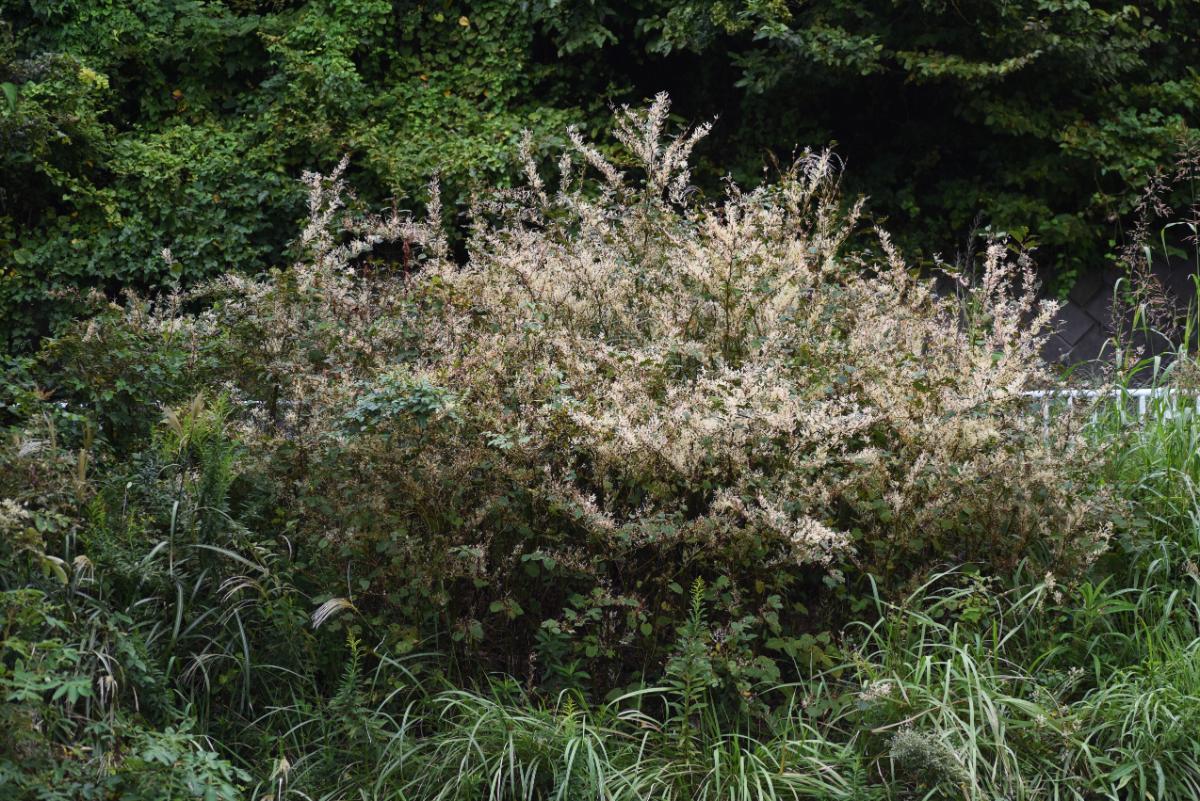
Japanese knotweed (Reynoutria japonica, previously known as Polygonum cuspidatum) is a modern-day hydra.
Try to dig up this plant, and a few inches of root left behind in the ground will launch a whole new knotweed outbreak. Mow it down, and each fallen stem will root and create a new plant. Cover it to smother it, and its stems cut like razors through the material.
Laying concrete over it will work – but let the slightest crack appear, and the plant forces a bunch of sprigs through and immediately starts sledgehammering the rest of the slab.
If Japanese knotweed is noticed when it’s still small, it can be killed off readily. But once the plant gets a foothold, it will require many rounds of treatments to eradicate it. Some homeowners in the United Kingdom have been unable to sell their houses due to knotweed on their property.
Don’t despair – destroying Japanese knotweed can be very hard work, but it isn’t a lost cause. Here’s how to get rid of Japanese knotweed from your garden and yard – and keep it from returning.
Jump to:
- Identifying Japanese Knotweed
- Can You Smother Japanese Knotweed with Tarps?
- Can You Remove Japanese Knotweed by Cutting It Back?
- Can You Remove Japanese Knotweed by Digging?
- Will DIY Methods Destroy Knotweed?
- What About Flamethrowers? Can I Destroy It with Fire?
- Will Japanese Knotweed Respond to Herbicides?
- The Specific Way to Kill Japanese Knotweed
- Fall Is the Time to Deal with Japanese Knotweed
- A Second Way to Do Foliar Herbicide Treatments
- Teamwork Makes the Dream Work
- How Long Does It Take to Kill Off Japanese Knotweed?
- Conclusion
Identifying Japanese Knotweed
Japanese knotweed can be found in construction areas, along roads, and in areas with lots of human activity. They especially like places with no shade where the topsoil is disturbed. Japanese knotweed prefers being dug up – like the hydra, its roots send out new roots and stems every place they’re cut. They spread profusely on riverbanks, but they’ll grow anywhere its seeds or bits of rhizomes end up.
Its bamboo-like stems grow up to 10 feet tall. Its roots are made up of an extensive network of rhizomes that can reach up to 10 feet deep – possibly even deeper. Its heart-shaped leaves will make a thick layer of vegetation that chokes out all other plants. The dead leaves contain chemicals that keep other plants from germinating.

In Japan, this plant behaves itself and is a wild edible vegetable whose sour shoots are peeled, soaked, parboiled, and cooked. It was brought to other countries because it made an easy-to-grow ornamental. Just like kudzu!
Should you cook or preserve with knotweed and invasive species? Find out here!
Can You Smother Japanese Knotweed with Tarps?

You can … for a minute. Normally, simply covering plants with newspaper, cardboard, and a nice thick layer of mulch can do the trick. Clearly, knotweed is in a whole other class. But when done correctly, tarping can be successful. The New Hampshire Department of Agriculture, Markets, and Food has devised a tarping method that is chemical-free and creates no disturbance or erosion issues.
- First, allow the knotweed to grow in spring. Make no attempt to control it.
- In early summer, cut down the knotweed at the base, as close to the ground as possible.
- (Take the cut stems and pile them on an impervious surface, such as concrete or a tarp, in order to dry out. Once they’re wholly dead and brown, they can be composted.)
- Cover the cut knotweeds with a thick layer of mulch, grass clippings, or wood chips to keep them from punching through the coverings.
- Cover the whole area, mulch and all, with a huge sheet of heavy, dark-colored tarp, plastic (7 mil. thick), or weed fabric. For additional peace of mind, put down an extra gigantic piece of tarp or weed fabric. Make sure the tarp extends past the knotweed by at least 10 feet. Remember, knotweed under stress means that it’s going to try to outgrow the boundaries placed on it.
- On top of this tarp, place a layer of sticks, soil, sand, mulch, or wood chips. Weigh down the edges with rocks so no sunlight gets in. Avoid ripping or tearing the tarp because the tiniest bit of sunlight will trigger the knotweed to grow.
- Leave it for 5 years. Add to the second layer of mulch as necessary. Stay vigilant for any sign of knotweed growth around the edges, and repeat these steps in those areas if a bit of knotweed appears.
- After 5 years the covering materials can be removed and the areas replanted. However, I would plant directly in the mulch, cutting a hole in the tarp or fabric in order to put the plants in without digging into the soil. Why take chances?
You may also be interested in:
Can You Remove Japanese Knotweed by Cutting It Back?
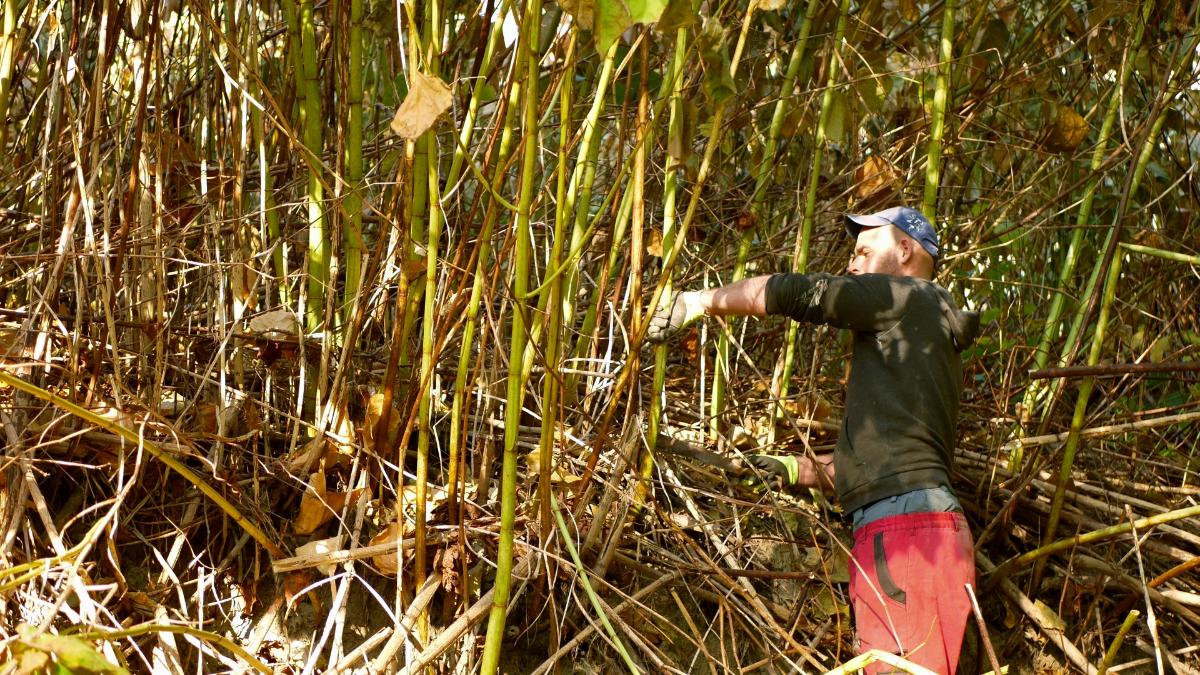
Not as much as one would hope. The theory about cutting it back is that doing this often enough would make the plant expend all the energy saved in its roots and make the plant “starve” after several years.
However, studies have not been able to prove long-term success even after mowing 20 times a year. Instead, the plant is spread further by tiny bits of shoots cut off while being mowed. The rhizomes, ever alert to any attack, respond by greater lateral growth when the above-ground plant parts are mowed.
Not only that but mowed knotweed bits must be collected and dried away from the soil to keep them from infecting new soil or gardens.
In the United Kingdom, Japanese knotweed is considered “controlled waste” – so adding it to compost bins or council-run garden waste bins is illegal. Adding knotweed clippings to any kind of compost is a terrible idea, as Japanese knotweed will take over the compost and overrun any gardens the compost is added to. It must be disposed of at a licensed landfill site.
Can You Remove Japanese Knotweed by Digging?
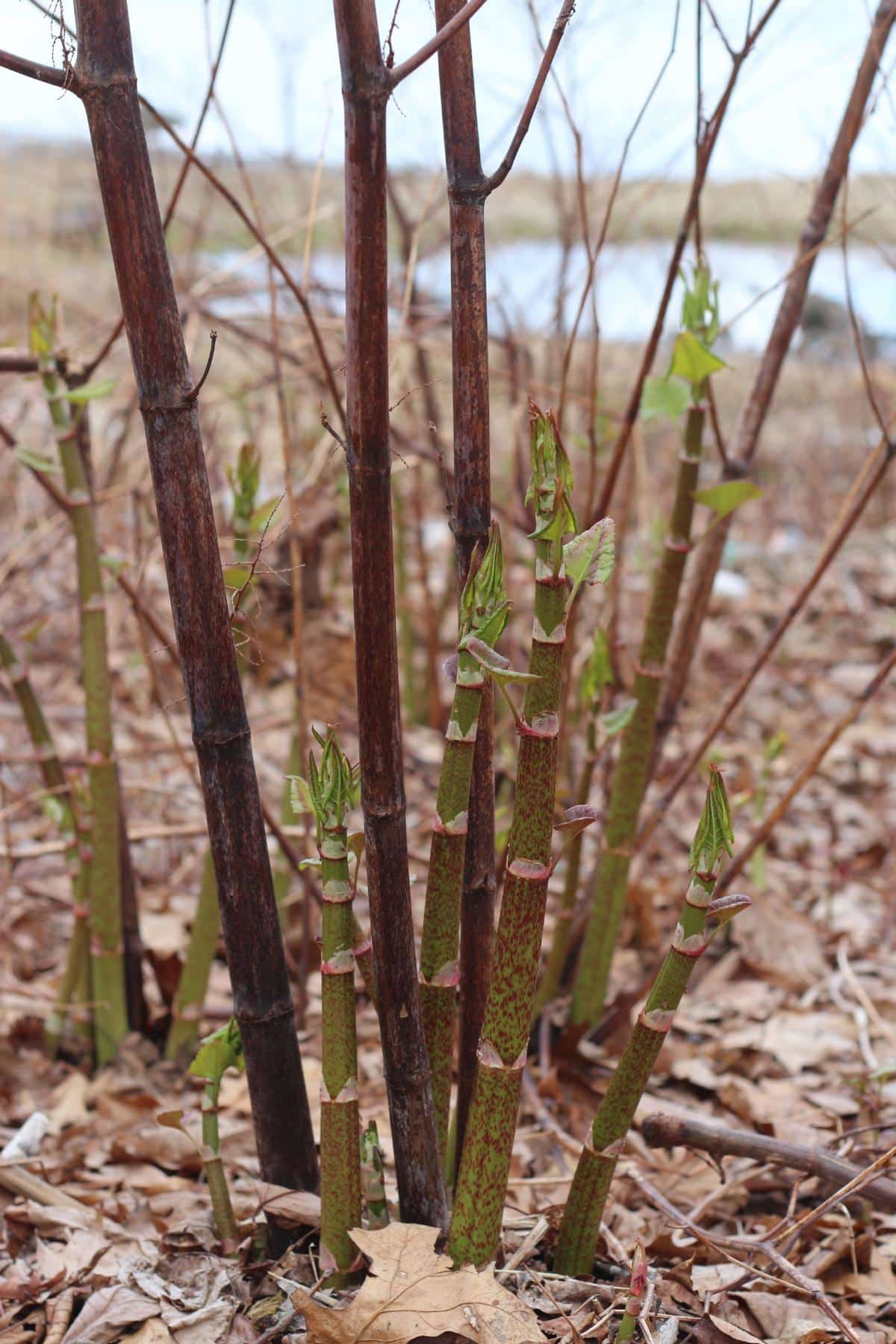
The answer is a resounding “No, stop, you’re making it worse!”
A park department in British Columbia, Canada, attempted to remove a Japanese knotweed infestation by using an excavator to dig out the soil around it to a depth of three meters. The next year, the stand of knotweed had grown back twice as large!
The rhizomes on this plant are brittle and break off – creating a new plant. A thumbnail-sized piece of rhizome can start a brand-new knotweed rampage. Bits of rhizomes that float down a river from an upstream stand can populate riverbanks.
Even when you think you have all the plant removed, there have been instances when it’s lain dormant for 20 years, only to burst into life when somebody starts excavating for new construction.

Will DIY Methods Destroy Knotweed?
Short answer: No. Bleach, lime, diesel fuel, kerosene, and vinegar do nothing to Japanese knotweed. Salting the area does no good: Japanese knotweed can also grow along the ocean in salt water.
Using these methods is like shooting at a tornado: All it does is make the tornado madder.

What About Flamethrowers? Can I Destroy It with Fire?
I feel your frustration. Unfortunately, you’re spraying flames on a plant that regularly colonizes volcanic sites. And it does nothing to the rhizomes underground.
Read more gardening advice from Rosefiend Cordell.
Will Japanese Knotweed Respond to Herbicides?

Yes, but there are caveats. Herbicides (specifically, glyphosate, aka Round-Up) will slow it down, but it takes years of repeated application to kill it off.
The roots (technically, the rhizomes) are the overcharged batteries that drive this behemoth. Any time the plant is threatened – through cutting, or digging, or flamethrowers – the rhizomes shift into overdrive to spread and put out new plants. The key is to spray the plant when the roots are most vulnerable.
Here’s how.
The Specific Way to Kill Japanese Knotweed
When the flowers start to fade, and the fruit starts forming, that’s when the Japanese knotweed plant is weakest. The Japanese knotweed is focusing all its energy on creating those seeds.
At the same time, because winter is coming, the plant begins to pull the nutrition stored in leaves and stems down into the roots.
When the flowers start to fade, spray a 2% glyphosate solution on the leaves. The plant absorbs the poison, but in the fall, the poison is pulled down to the roots along with the nutrients.
The stems can be injected with glyphosate, but spraying is faster. Though glyphosate is not good for the soil or environment, letting the knotweed spread is even worse.
It’s important to spray herbicides safely. Learn more.
Fall Is the Time to Deal with Japanese Knotweed
There's not much use in spraying at other times during the season. That kills only the leaves while the roots remain mostly unaffected.
The rest of the year, let it grow. Don’t cut it down; dig it up or try to set fire to it.
Spray it every year in the fall.
Eventually, once the plant is sprayed every fall, it slowly dwindles and dies. The weed shouldn’t feel threatened. One weed specialist said the plant should be treated like the vicar in an Agathe Christie novel: Slip a little poison into his tea daily until he takes a dirt nap.
However! Even if the plant appears to be dead above ground, the roots are still alive and growing underground. Even if other plants are returning to life above, never let your guard down. Always keep an eye out for new sprouts. Also, dig as little as possible, to keep from accidentally disturbing the old roots.
A Second Way to Do Foliar Herbicide Treatments
This is from the New Hampshire Department of Agriculture, Markets, and Food.
- Follow steps 1 through 3 on their tarping operation above – let it grow in spring, cut it down in June, pile the cut stems someplace where they can dry out and be disposed of.
- Let the knotweed grow, and don’t touch it until Fall, after it flowers. (Waiting allows the bees and pollinators to do their work and enjoy some nectar.)
- As soon as the flowers fade – before seeds start to form – apply a 5% solution of a glyphosate product using a backpack sprayer or a mist blower. Apply until all foliage is wet, but not to the point of runoff.
- The next year, if knotweed resprouts, repeat the above steps. Keep on it every year until it’s gone.
- Even after it’s gone, stay vigilant and make sure to act if it tries to come back.
More Gardening articles:
- Planting Perfect Roses in Pots
- 12 Best Ornamental Food Plants for Edible Gardens
- 9 Steps to Safely Spray Weed Killer
Teamwork Makes the Dream Work
Don’t tackle Japanese knotweed alone. This might be the biggest point that most gardening articles seem to be missing. In the old days (and even now), farmers would call on each other to pitch in and get the harvest and planting done, moving from harvest to harvest in the neighborhood. The Avengers had to team up to fight Thanos. In areas where Japanese knotweed is rampant, neighborhoods and communities will have to join forces to poison and spray or tarp this Godzilla weed at the right time.
If there’s a community-based effort to eradicate this plant, the odds of success are much higher.
How Long Does It Take to Kill Off Japanese Knotweed?
For a smaller patch, a year or two. For established plants, years. The stand has got to be hit over and over again, consistently, to make headway.
But don’t give up – that’s how the plant wins. This one is just a little more … tenacious.
Conclusion
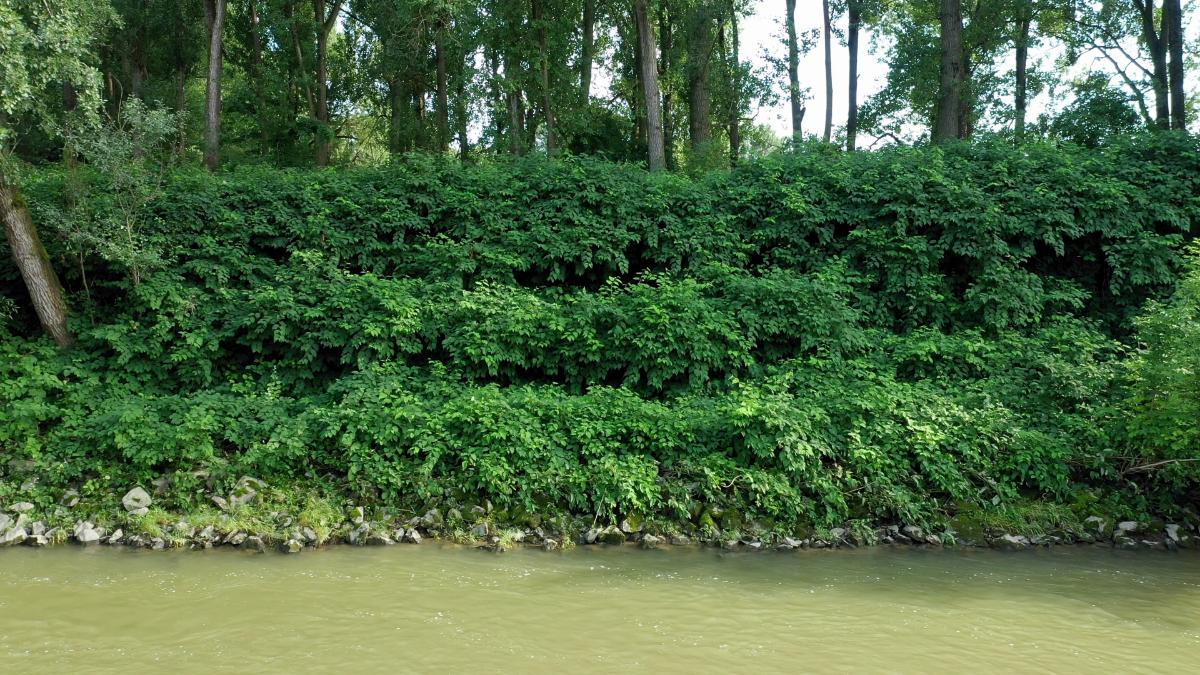
Japanese knotweed is the demon weed that would invade Hell just for fun and leave the devil weeping bitter tears. However, by making a smart plan of attack and staying on it consistently, whether you choose to tarp it or spray it, and by creating a community-wide eradication program, you should be able to be successful.

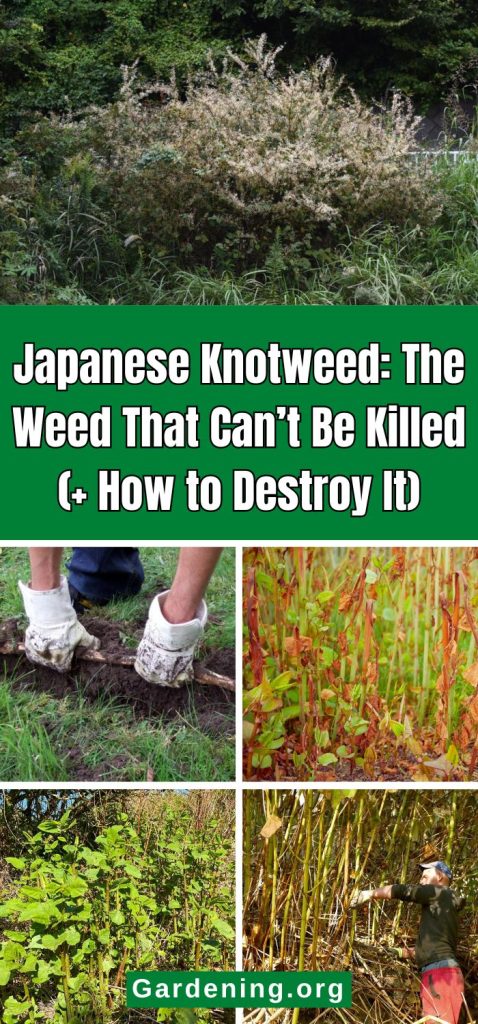
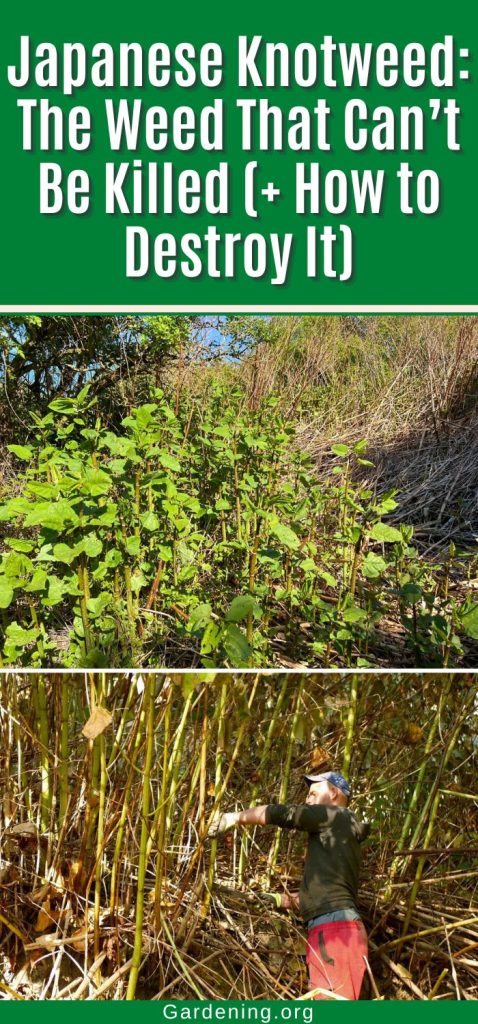
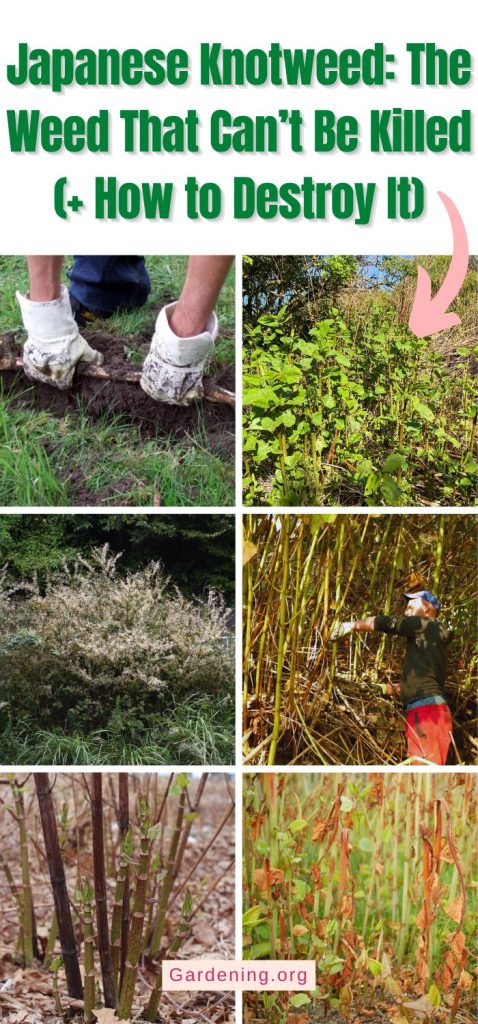
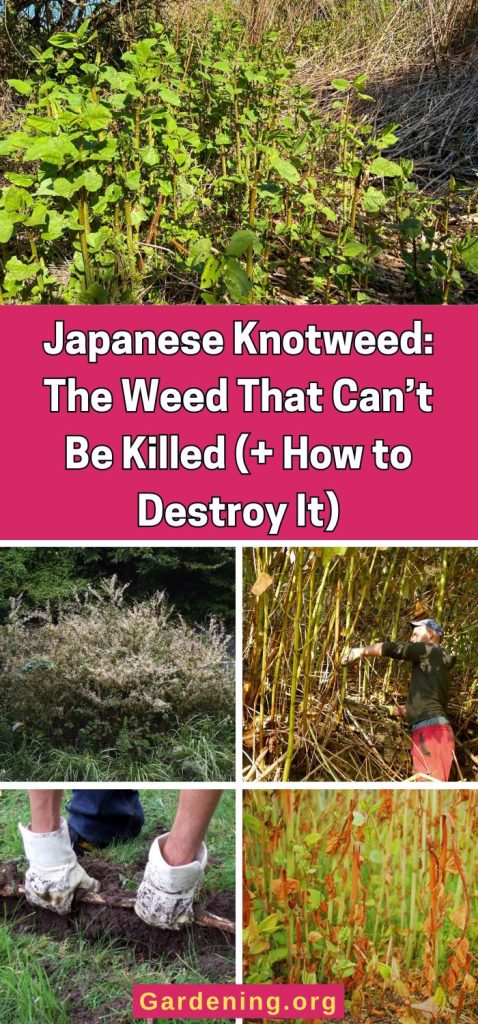
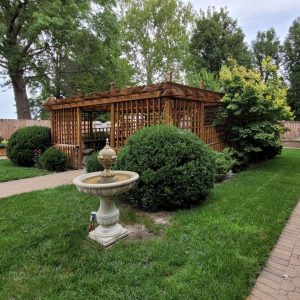
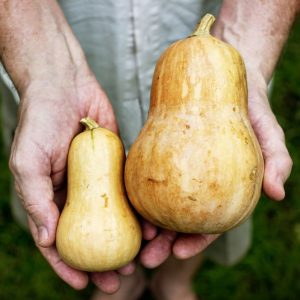

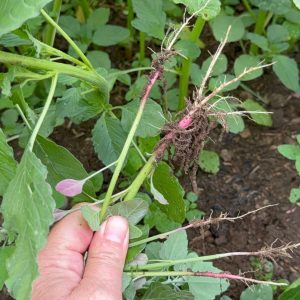
NotAKnotweedLover
Thank you so much for such detailed information! It is an absolute beast - to say the least.
When you say new shoots can be quickly taken out - by which method is best? I have a new construction home and have stands along the creek, but small shoots where rhizomes were spread during grading. We just did our first fall spray on the stands.. just want to understand how to tackle the little shoots in the spring. Thanks!
Mary Ward
There are different methods of control, but the University of New Hampshire has put out some workable control information: https://extension.unh.edu/resource/invasive-plants-specific-methods-control